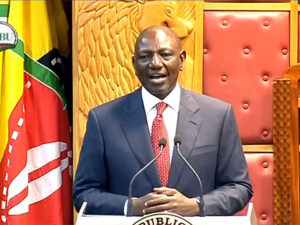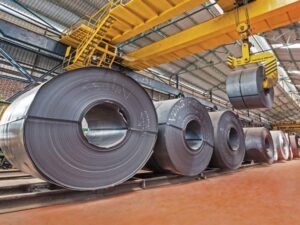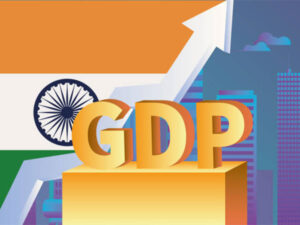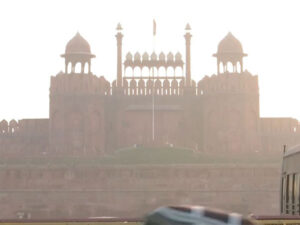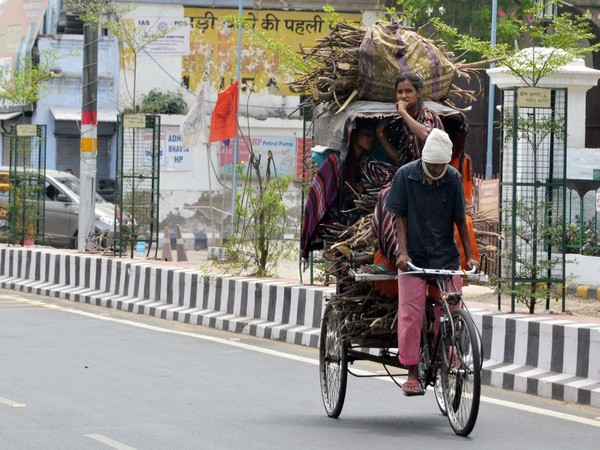
Uttar Pradesh, May 10 (ANI): A rickshaw puller carries firewood during the COVID-19 lockdown in Agra on Sunday. (ANI Photo)
New Delhi [India], February 15 (ANI): India’s key economic indicators continue to breach the comfort level of economic policymakers with inflation measured by the consumer price index (CPI) rising for the fourth consecutive month to 6 per cent in January 2022 compared with 5.7 per cent previous month, the annual wholesale price-based inflation growing at 12.96 per cent in January, easing marginally from growth of 13.56 per cent during December 2021, Government data showed on Monday.
If that were not enough, the Index of Industrial Production (IIP) grew a marginal 0.4 per cent on-year, down from 1.3 per cent growth in November, official figures last week showed, partly on account of an unfavourable base.
The triple whammy follows close to the Reserve Bank of India’s Monetary Policy Committee (MPC) decision to keep both repo rates and reverse repo rates unchanged for a “durable and broad-based recovery” and citing concerns over inflation and COVID-19 omicron variant.
The headline inflation, as it stands with a spike of 6.01 per cent in the month of January, is now at the upper limit of Reserve Bank of India’s target range of 2-6 per cent, says a Crisil research, according to which a ‘base effect driven sharp rise in food inflation drove the rise in CPI, even as core inflation remained elevated’. In terms of forecast, RBI has projected CPI inflation at 4.5 per cent for upcoming fiscal. The latest retail inflation data — as the Crisil report points out — shows that sequentially, CPI grew 0.5 per cent on-month 2 in January, similar to the rate seen in the past 2 months. Food CPI inflation rose to 5.4 per cent on-year from 4 per cent previous month and 2 per cent in January 2021, Fuel inflation moderated to 9.3 per cent from 11 per cent previous month, but higher than 3.9 per cent in January 2021 and core CPI inflation was slightly lower at 6 per cent compared with 6.1 per cent previous month, but higher than 5.5 per cent in January 2021. Crisil finds “rural CPI inflation higher at 6.1 per cent in January compared with 5.4 per cent previous month and urban CPI inflation stable at 5.9 per cent as the previous month.
A scrutiny of CPI inflation trends by Crisil, using the National Sample Survey Organisation data to estimate the average expenditure patterns across three broad income groups (bottom 20 per cent, middle 60 per cent, and upper 20 per cent of population) and map them with the inflation movement underlines that urban poor (bottom 20 per cent) faced highest inflation in January. The effective inflation rate for urban poor rose to 6.3 per cent in January from 6.2 per cent previous month. For urban rich (top 20 per cent) it stayed stable at 5.9 per cent as previous month, says Crisil.
However, according to Crisil, inflation is also catching up fast in rural areas where it is the rich that face highest inflation (6.2 per cent in January vs 5.5 per cent previous month), while inflation for poorest 20 per cent is slightly lower (6.1 per cent vs 5.3 per cent). Food inflation was higher in urban areas at 5.9 per cent in January compared with 5.2 per cent in rural. Given food occupies the highest weight in consumption basket of the poorest 20 per cent, urban poor are suffering to a greater extent than their rural counterparts.
There was little solace from the trend in annual wholesale price-based inflation which grew at 12.96 per cent in January, easing marginally from growth of 13.56 per cent during December 2021. The high rate of inflation in January 2022 is primarily due to rise in prices of mineral oils, crude petroleum and natural gas, basic metals, chemicals and chemical products, food articles etc as compared the corresponding month of the previous year, the Ministry of Commerce and Industry said on Monday. The WPI rose to 14.87 per cent in November 2021.
According to Aditi Nayar, chief economist, ICRA, though the WPI inflation receded in January 2022 led by a welcome decline in core items, manufactured food products, and crude petroleum and natural gas, it exceeded forecast of 12.7 per cent. “Despite a steep correction in vegetable prices, an unfavourable base pushed up the primary food inflation into double-digits in January 2022, which is likely to prove temporary,” Nayar added.
Prices of minerals increased by 11.08 per cent and non-food articles by 0.37 per cent in January, 2022 as compared to December, 2021. Prices of food articles declined by 2.61 per cent and crude petroleum and natural gas by 5.11 per cent. In the fuel and power group, prices of electricity increased by 15.94 per cent and mineral oils by 0.83 per cent in January 2022 as compared to December, 2021. Prices of coal remain unchanged. Inflation in food articles spiked to a 10.33 per cent in January 2022 from 9.56 per cent in December 2021. Vegetable price rise rate jumped to 38.45 per cent, against 31.56 per cent in the previous month. In the food articles category, pulses, cereals and paddy witnessed a month-on-month price rise, while inflation in egg, meat and fish stood at 9.85 per cent and in potato and onion at (-)14.45 and (-)15.98 per cent, respectively. (ANI)







